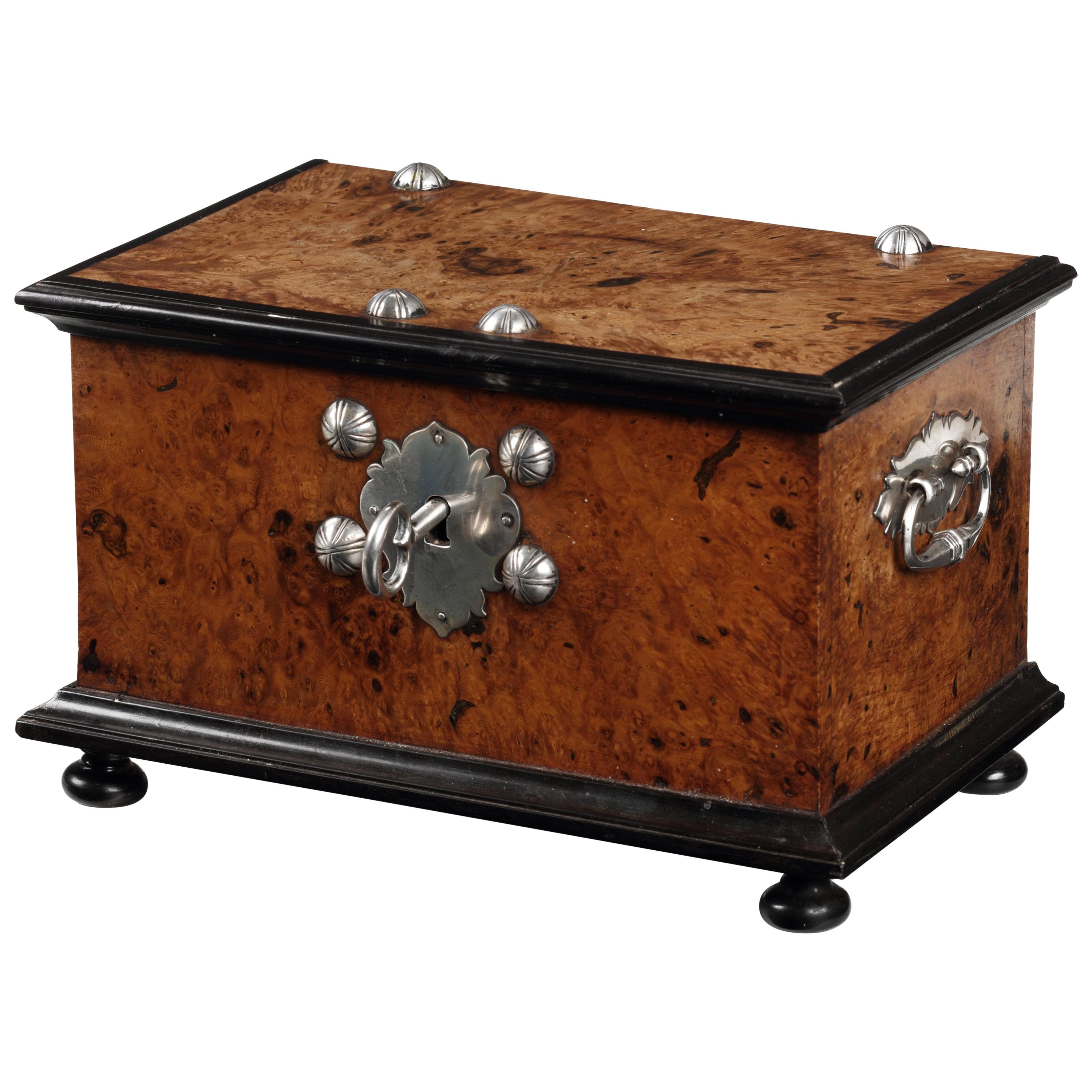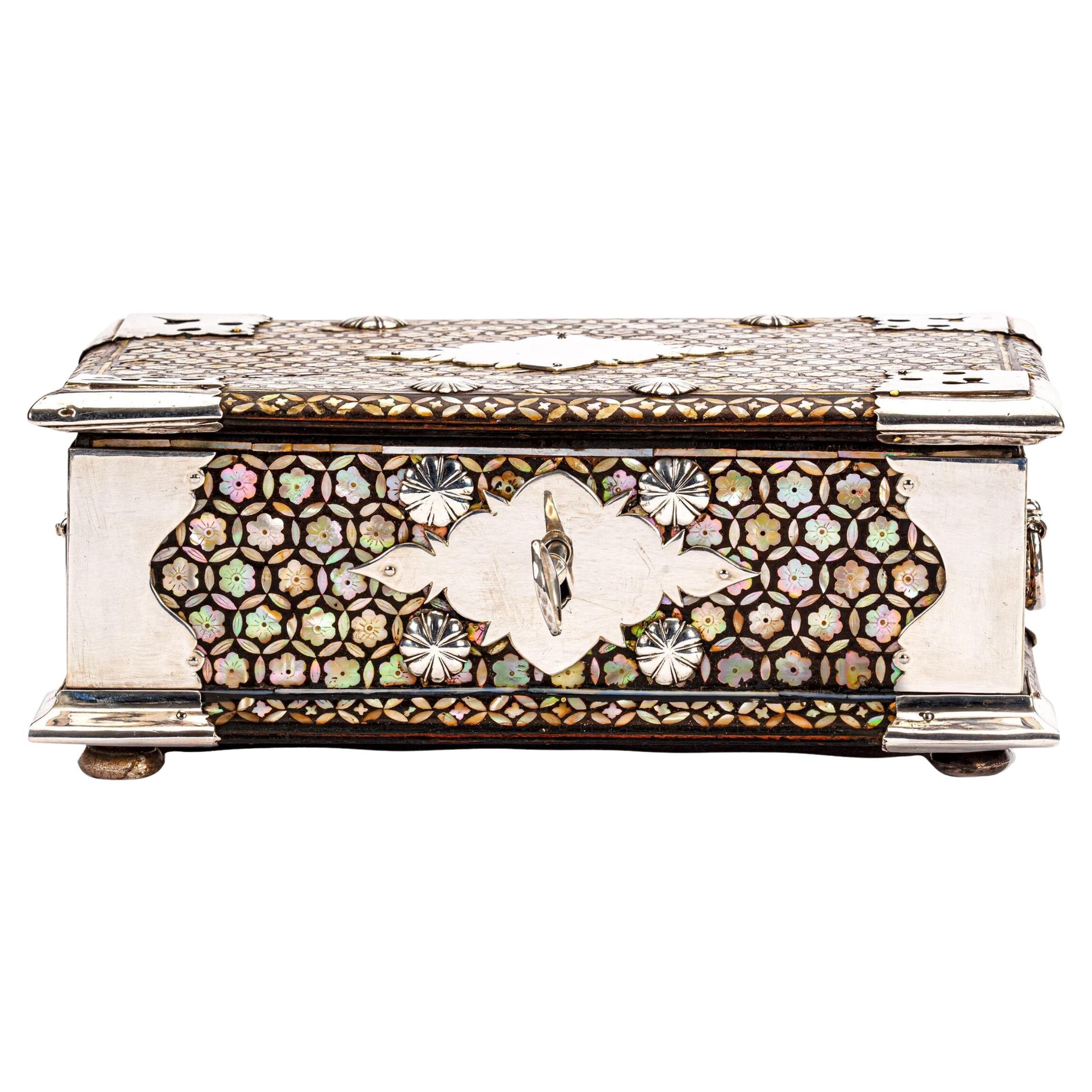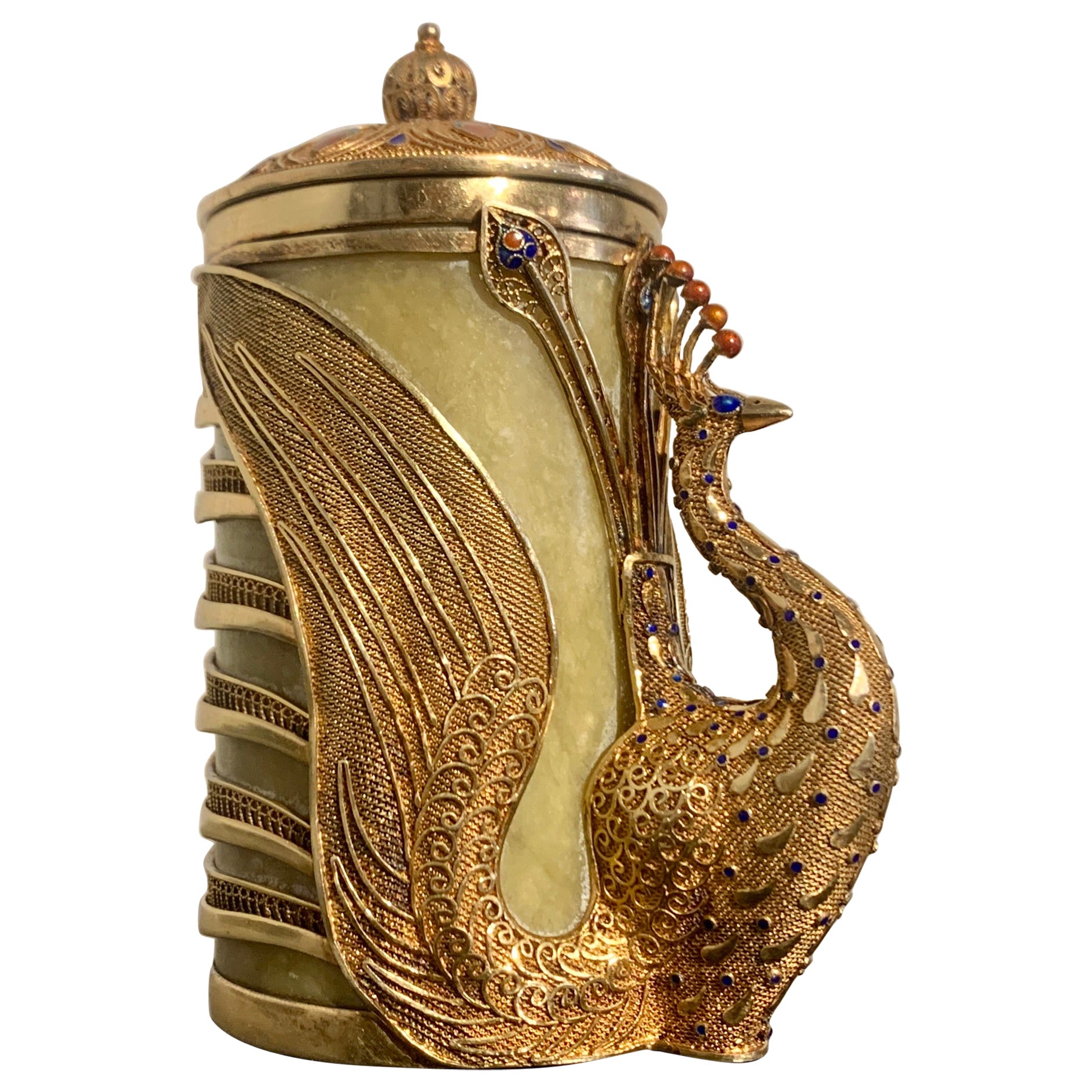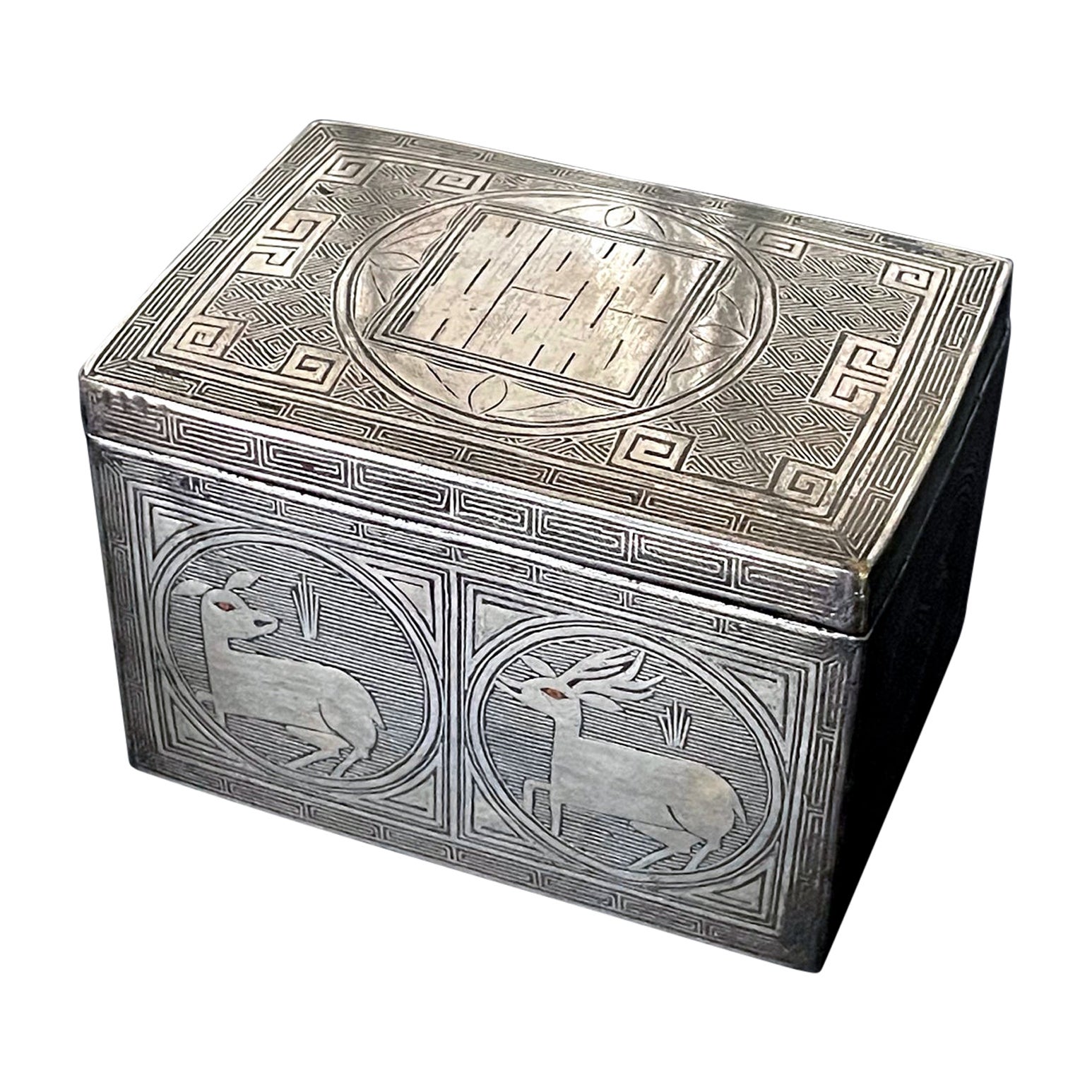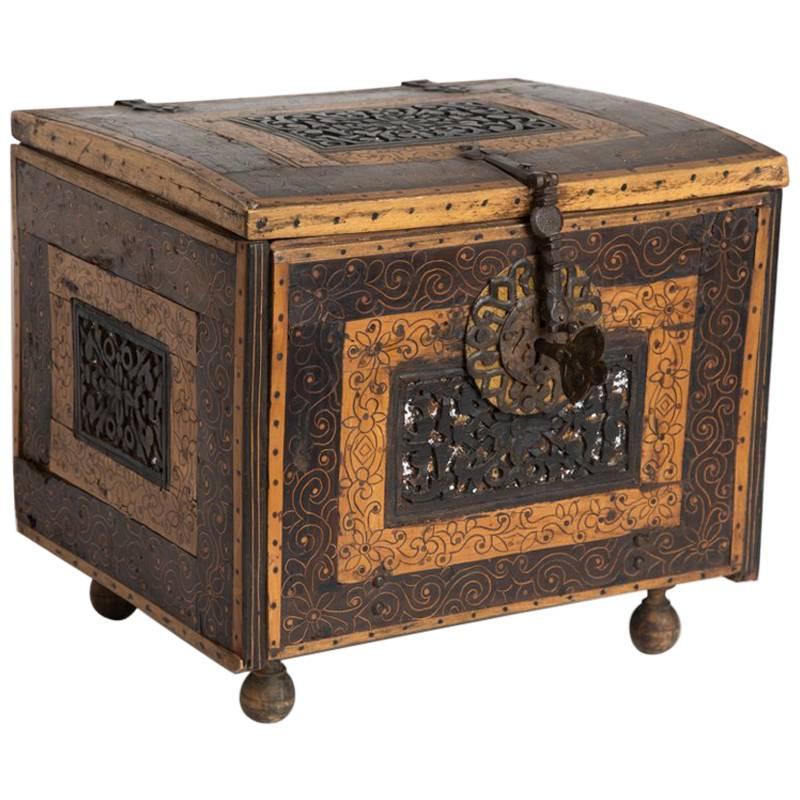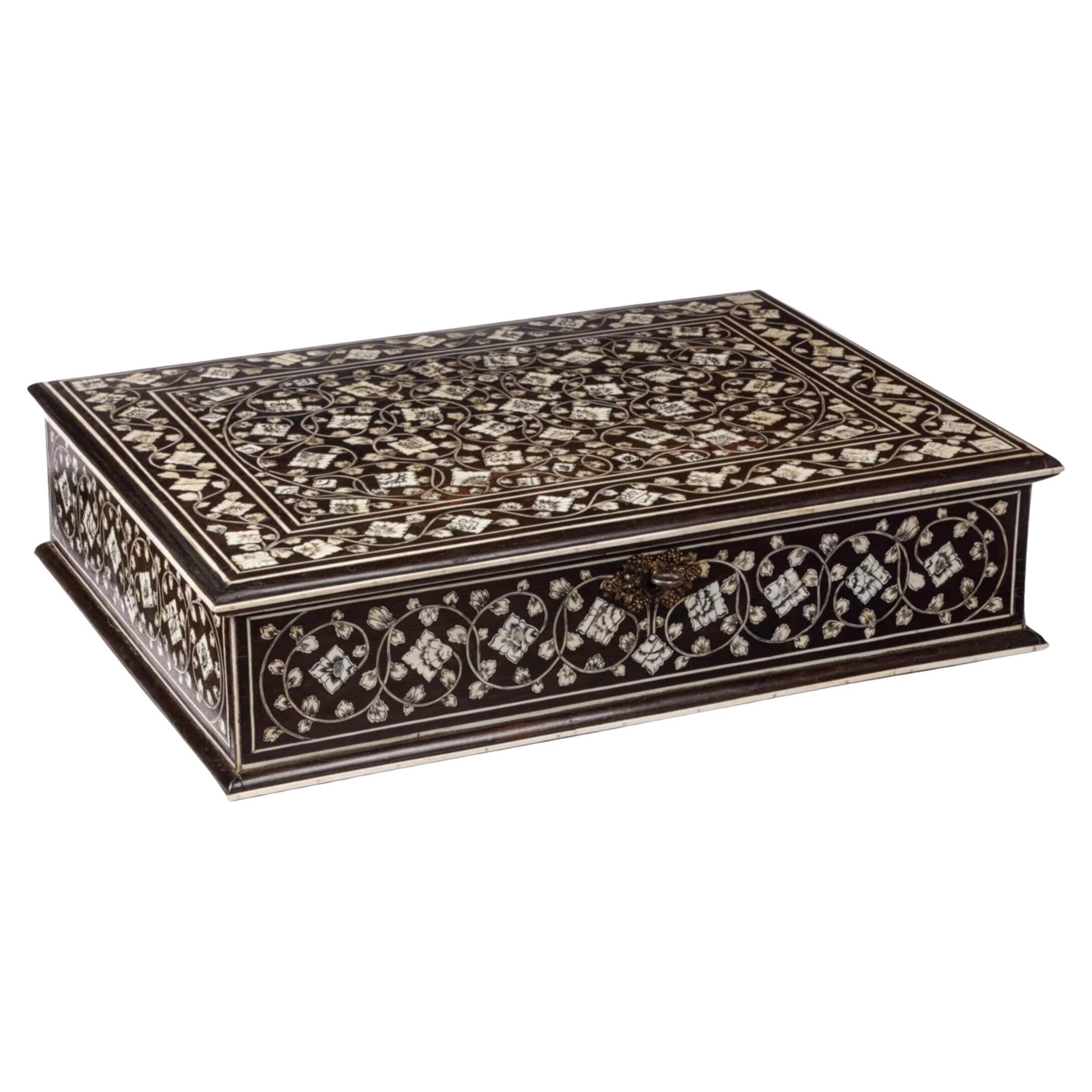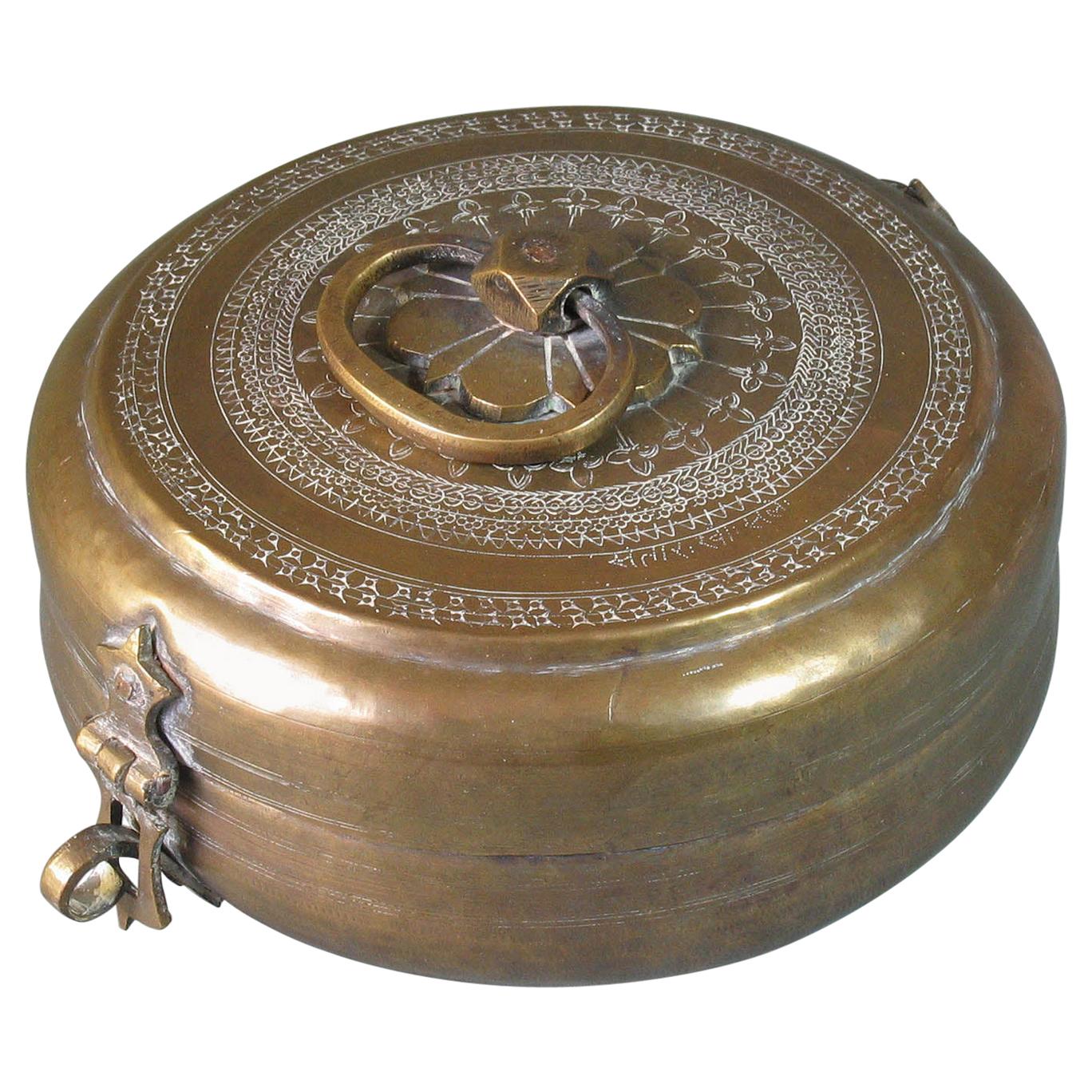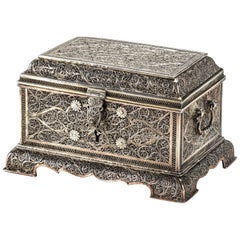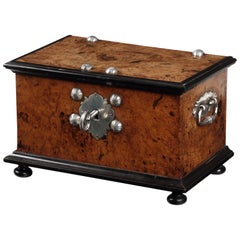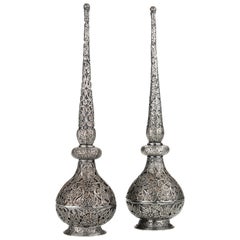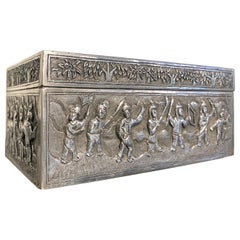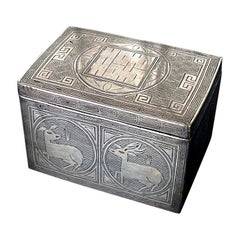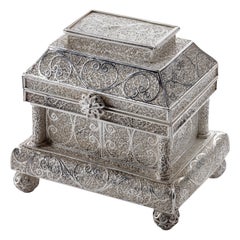
Fine Indonesian Colonial Silver Filigree Casket, Early 18th Century
View Similar Items
Want more images or videos?
Request additional images or videos from the seller
1 of 2
Fine Indonesian Colonial Silver Filigree Casket, Early 18th Century
About the Item
- Dimensions:Height: 4.14 in (10.5 cm)Width: 4.65 in (11.8 cm)Depth: 3.43 in (8.7 cm)
- Style:Dutch Colonial (Of the Period)
- Materials and Techniques:
- Place of Origin:
- Period:Early 18th Century
- Date of Manufacture:1700-120
- Condition:Wear consistent with age and use.
- Seller Location:Amsterdam, NL
- Reference Number:1stDibs: LU5458222092942
About the Seller
5.0
Vetted Seller
These experienced sellers undergo a comprehensive evaluation by our team of in-house experts.
Established in 1985
1stDibs seller since 2020
19 sales on 1stDibs
Typical response time: 2 hours
More From This SellerView All
- Fine Indian Silver Filigree Casket with Hinged Cover, 18th CenturyLocated in Amsterdam, NLA pair of very fine silver filigree rosewater sprinklers Possibly India, Karimnagar, early 18th century Measures: Height 31.6 cm and 31.7 cm,...Category
Antique 18th Century Indian Metalwork
MaterialsSilver
- Fine Dutch Colonial Indonesian Casket with Silver Mounts, circa 1706Located in Amsterdam, NLA fine Indonesian Ambonya burl, ebony and teak casket with silver mounts Jakarta (Batavia), circa 1706 (year letter W (1705-1710), marked DV, probably Dirck Vooght The outer ri...Category
Antique Early 18th Century Indonesian Dutch Colonial Decorative Boxes
MaterialsSterling Silver
- Pair of Fine Islamic Silver Filigree Rosewater Sprinklers, Early 18th CenturyLocated in Amsterdam, NLA pair of very fine silver filigree rosewater sprinklers Possibly India, Karimnagar, early 18th century Height 31.6 cm and 31.7 cm, weight 39...Category
Antique Early 18th Century Indian Islamic Metalwork
MaterialsSilver
$33,211 / setFree Shipping - 18th-century Dutch-colonial Peranakan mother-of-pearl casket with silver mountsLocated in Amsterdam, NLAn Indonesian Peranakan mother-of-pearl inlaid mastic sirih casket with silver mounts Jakarta (Batavia), circa 1720-1730, the silver hinges marked for Batavia, maker’s mark HS or SH...Category
Antique Mid-18th Century Indonesian Dutch Colonial Antiquities
MaterialsSilver
- Splendid and Heavy Late 17th Century Dutch-Colonial Silver Filigree SalverLocated in Amsterdam, NLA splendid and heavy Dutch-colonial silver filigree salver Indonesia, Batavia (Jakarta) or possibly Padang, West Sumatra, 2nd half 17th century Diam. 22.9 cm Weight 551 grams This filigree-work was probably done by Chinese masters...Category
Antique 17th Century Indonesian Dutch Colonial Metalwork
MaterialsSilver
- 18th century Dutch-Colonial ‘Vizagapatam’ pen-engraved bone inlaid ebony boxLocated in Amsterdam, NLA large Indian Colonial ‘Vizagapatam’ pen-engraved bone inlaid ebony box Masulipatnam or Vizagapatam, 2nd half 18th century H. 10.8 x W. 47 x D. 34 cm ...Category
Antique Late 18th Century Indian Dutch Colonial More Asian Art, Objects ...
MaterialsBone, Ebony
You May Also LikeView All
- Chinese Silver Repoussé Box with Warriors, Early 20th Century, ChinaLocated in Austin, TXA fine late Qing or early Republic Period Chinese silver repoussé box featuring a scene possibly from the Romance of the Three Kingdoms, ...Category
Early 20th Century Chinese Qing Metalwork
MaterialsSilver
- Chinese Export Hardstone and Gilt Silver Filigree Peacock Box, 1920's, ChinaLocated in Austin, TXAn exquisite Chinese export peacock from hardstone and gilt silver filigree canister box, Republic Period, circa 1920's, China. The graceful and elegant hardstone container of cyli...Category
Early 20th Century Chinese Qing Metalwork
MaterialsStone, Silver, Enamel
- Fine Korean Iron Box with Silver Inlay Joseon DynastyLocated in Atlanta, GAA fine Korean iron box that was traditionally used to store tobacco leaves dated to the late Joseon Dynasty circa 19th century. The box is made from iron and has a heavy weight, although the wears along the edges of the lid and base exposes a bronze metal color underneath, indicating the iron metal may contains a high level of copper. The surface was beautifully decorated with elaborate silver inlay that covers the entire surface except the base. The extraordinary workmanship depicts a pair of deer within the circled square (shape of heaven and earth) and a lined background on the long sides and a crane with spread wings on the shorter sides. Both animals were associated with longevity. Their eyes were highlighted with copper inlay, adding a lively touch to the animation. The lid is centered with a Chinese character "Xi" (Paired-Hui in Korean), which means double happiness. (In Chinese culture, it is often used in a wedding ceremony). The large symbol was set on geometrical background of tightly scrolling diamond pattern surrounded by stylized Ruyi mushroom heads, another floral longevity symbol. Archaic fret cloud band borders the entire perimeters of the lid and the container. Tobacco was introduced to Korean in the first half of the 17th century and gradually gained popularity. When the tobacco was started being smoked in shredded form instead of rolled leaves, there rose the production of the smoking accessories, with some in fine quality as luxury items for the elite. The accoutrement such as this box is a fine example made in late Joseon dynasty, using extensive silver inlay, a technique called "jjoeum-ipsa", in which the silver wires were hammered into the scorched iron surface to create the elaborate design. Similar boxes with variation of shape and motifs are in the collection of several major museums. Compare the box with item Gu 754 in the National Museum of Korea; item 22.78 in MET NYC and M.240:1, 2-1926 in V& A Museum in London. The most closely related example we found is item C232 in the collection of the Museum of East Asian Art...Category
Antique 19th Century Korean Other Metalwork
MaterialsSilver, Copper, Iron
- Fine Korean Box with Tray Iron with Silver Inlay Joseon DynastyLocated in Atlanta, GAA fine Korean iron box with intricate silver inlay dated to the late Joseon Dynasty circa 19th century. The body of the box is made from iron of a heavy weight although the wear on t...Category
Antique 19th Century Korean Other Metalwork
MaterialsSilver, Iron
- 18th Century Spanish Colonial EscritorioLocated in Scottsdale, AZMagnificent 18th century Bolivian locking escritorio with inlaid wood and hand-forged iron details.Category
Antique Early 18th Century Bolivian Spanish Colonial Decorative Boxes
MaterialsIron
- Antique Chinese Tibetan Filigree Brass Trinket Box with Turquoise and CoralLocated in San Diego, CAA beautiful Chinese-Tibetan brass trinket box with turquoise and coral glass inlay pieces. Great filigree design with has a wonderful patina. In good...Category
Early 20th Century Tibetan Decorative Boxes
MaterialsBrass
Recently Viewed
View AllMore Ways To Browse
Silver Filigree Casket
Dutch Filigree
Colonial Casket
Dutch Sri Lankan
Goa Furniture
Chinese Filigree Silver
Chinese Silver Filigree
Antique Chinese Silver Filigree
Chinese Casket
Sri Lanka Colonial
Antique Furniture Goa
Colonial Sri Lankan
Asian Dutch Colonial Furniture
Sing Fat
Ottoman Tombak
Yemeni Dagger
A Large Chinese Cloisonne Incense Burner And
Turkish Incense Burner

